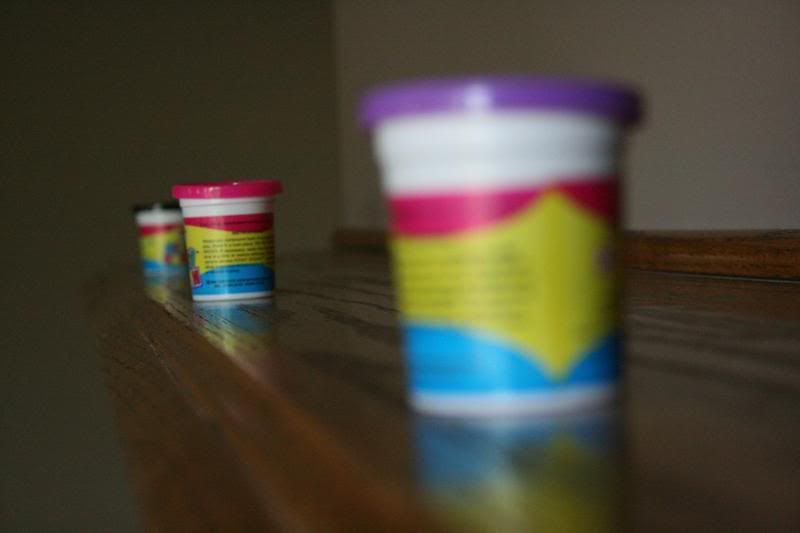Since the fan was going fast, I used a tri-pod to keep the camera still and used a very slow shutter speed, it was 1/80.
The shutter speed on here was much faster, I had it a 1600. As you can see the fan was still to fast for the stop-action, but liked the way this one turned out so I kept it. You can see the movement but I stopped it still. If I would've completely stopped, it would just look like a fan turned off. That's why i chose this one..
shutter speed was 1600-f stop was .05
I used my depth of feild to focus on different ranges. In this one the first tube of playdo is in focus, in the second it no longer is. I was probably a couple of feet away from the first tube at the most. More like a foot and a half.
shutter speed was again 1600 and f stop .05
Same thing as before, but I changed my depth of feild. The first tube is no longer in focus as it was in the second. Same exact distance, same spot...about a foot and a half away.
1 comment:
Andrew,
Nice to see your photos. Glad you are making progress in the class. The fan pics were good examples of motion. To show more blur you could reduce the speed to under 1/30 a second or even 1/15. Might be a nice effect. Also move in for a closer shot. I agree with your assessment that a completely frozen picture would seem as if the fan was simply turned off. Remember. . .objects centered in the middle are not as dynamic as those just off center. Also keep in mind the rule of thirds.
Your two tubes pics are excellent examples of DOF. Good work. In both cases you moved your camera very close to the subject (tube). That is the easiest way to manipulate DOF. Remember this concept when you shoot your final portfolio if you want to manipiulate the focus in the background of your pictures. Having now completed this assignment it might be good to review the DOF Powerpoint tutorial on Blackboard to see the other ways to manipulate DOF. DOF is the most complicated concept to teach and understand.
Enjoy the holiday weekend.
Post a Comment